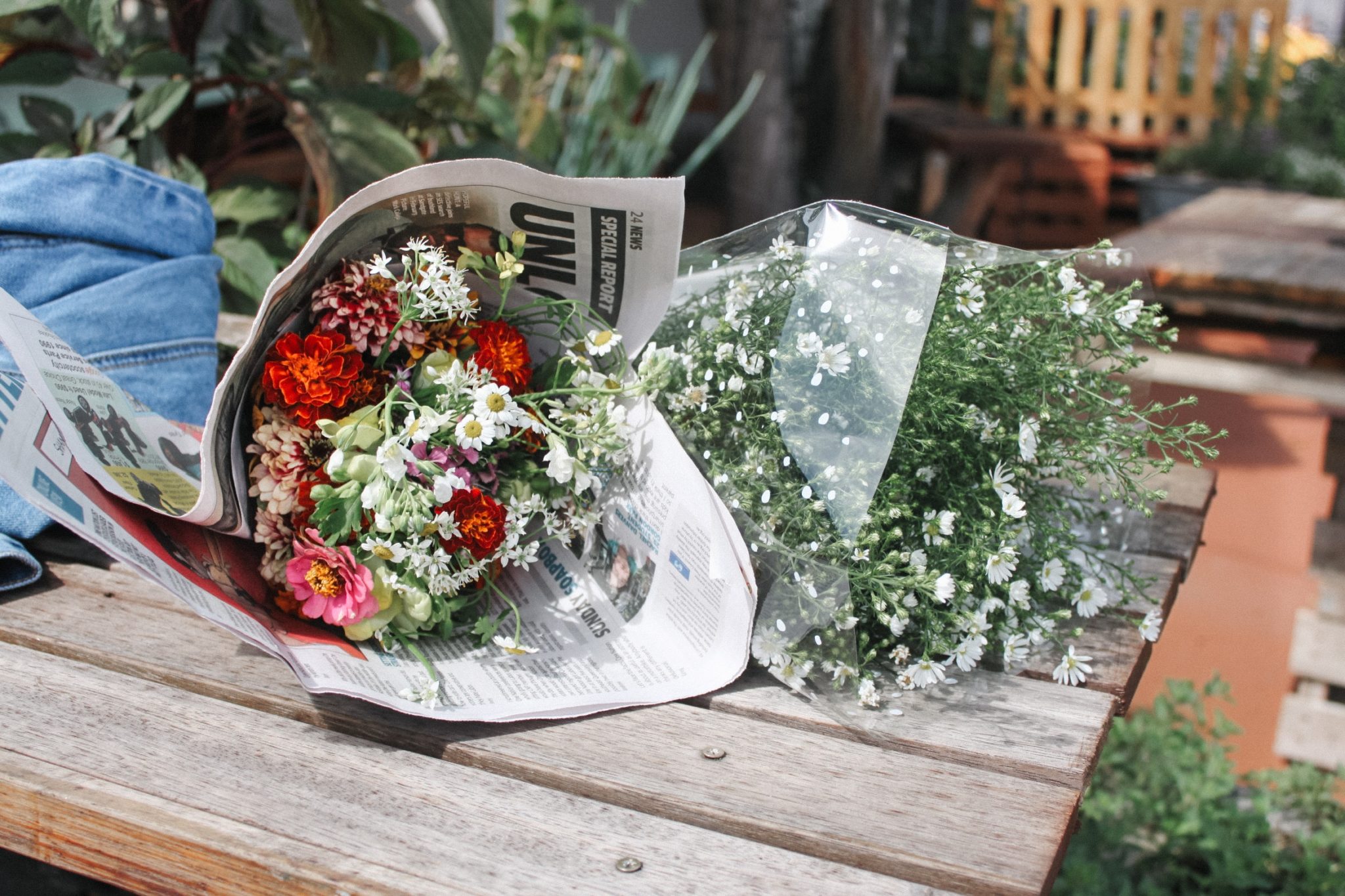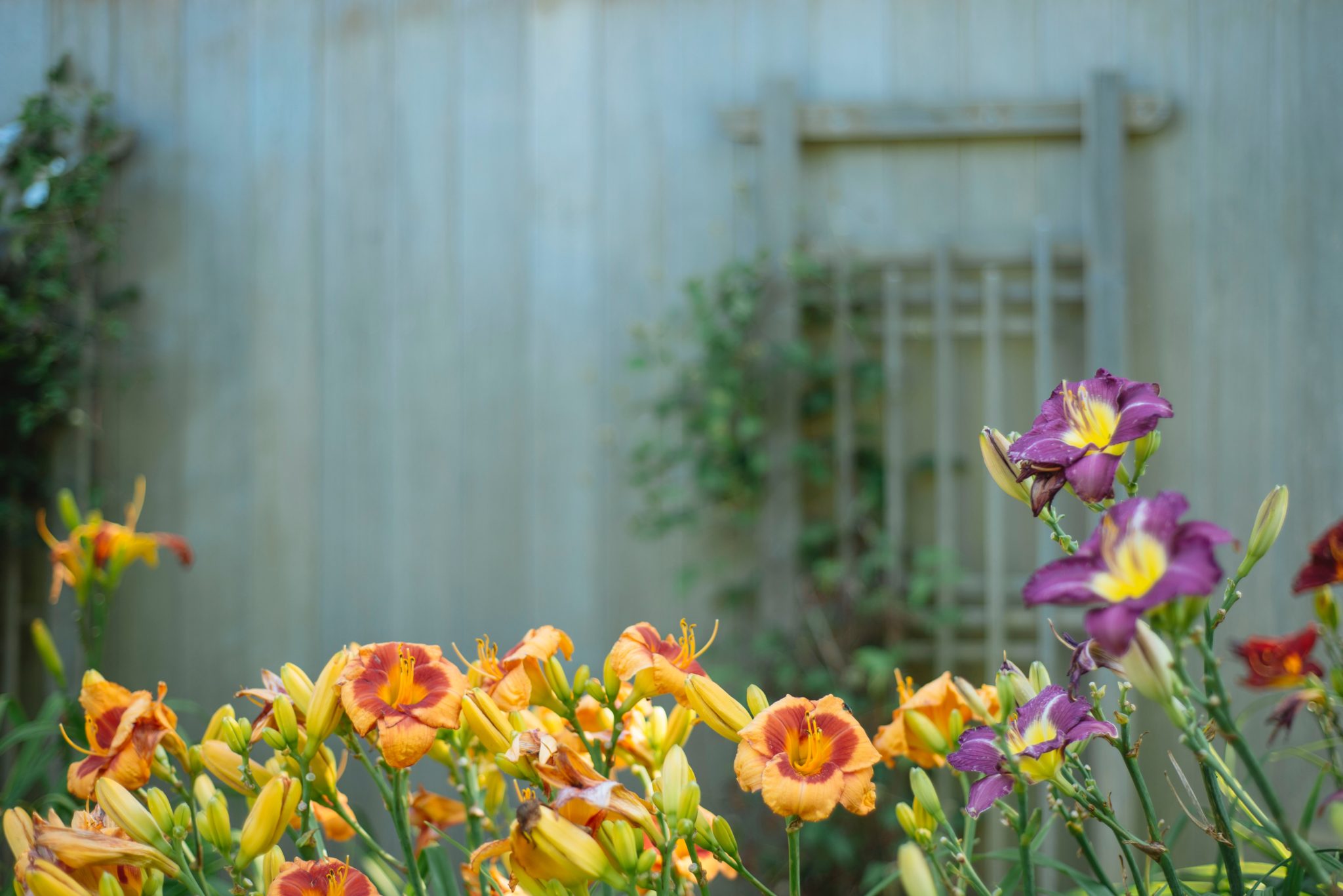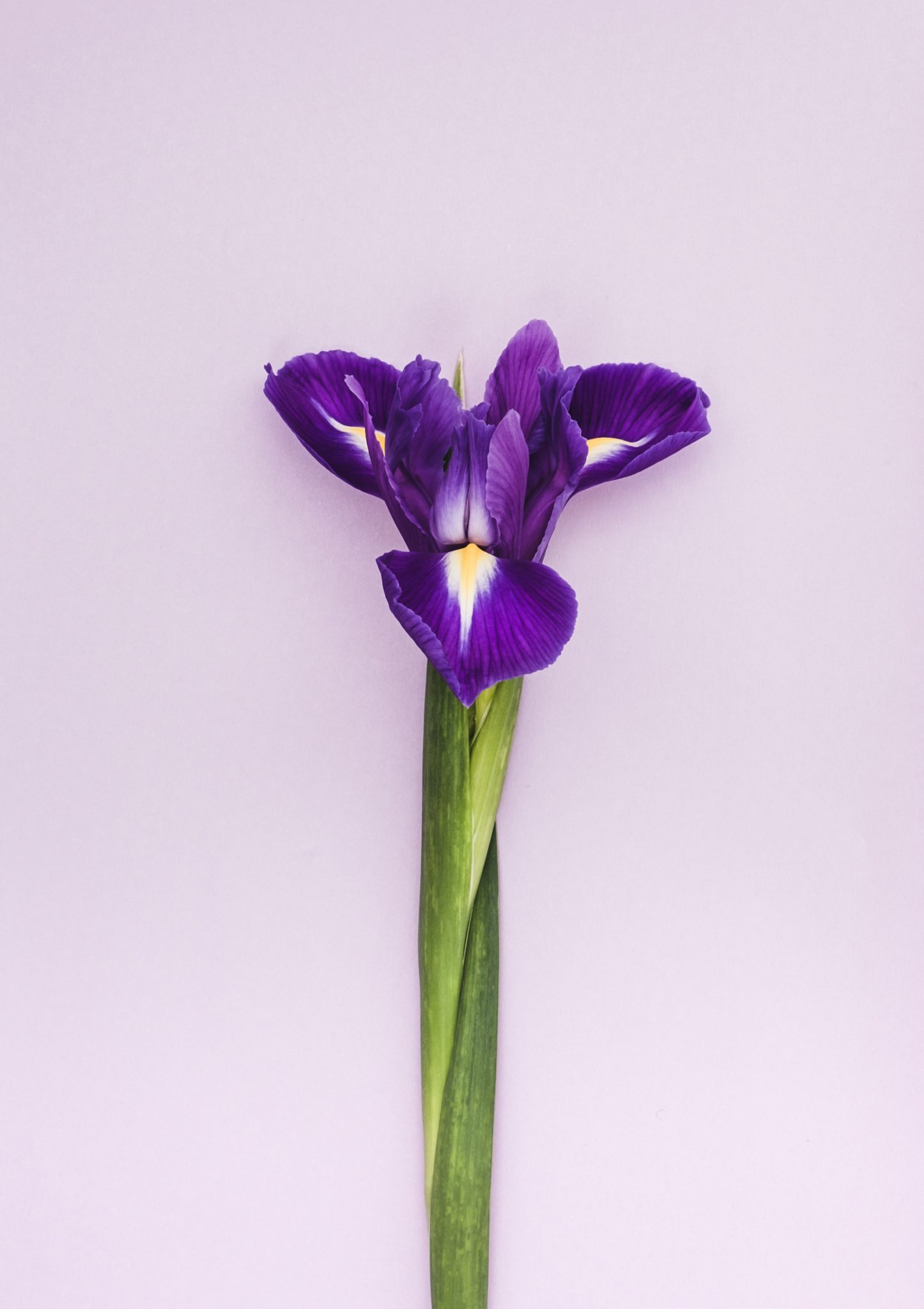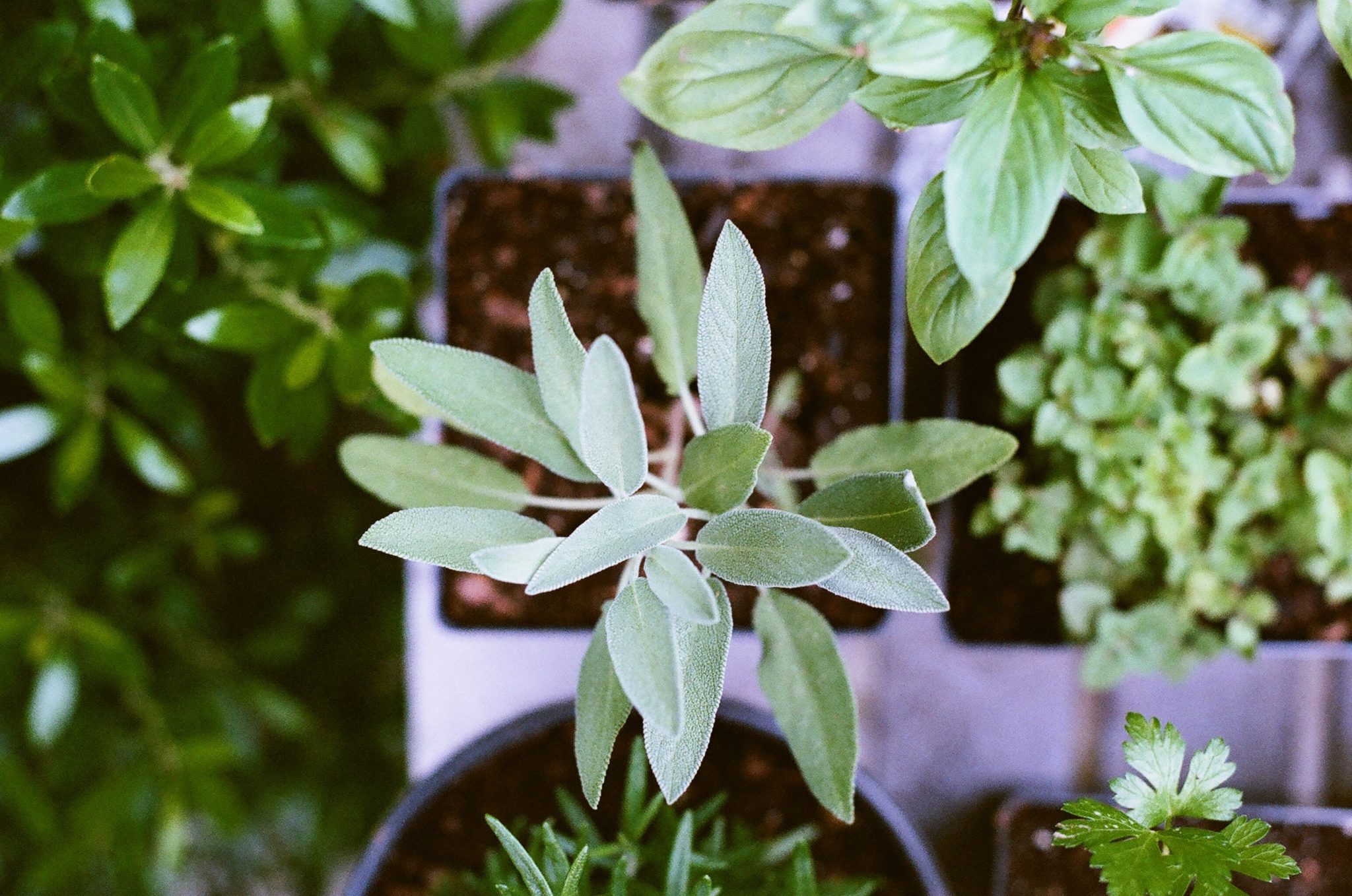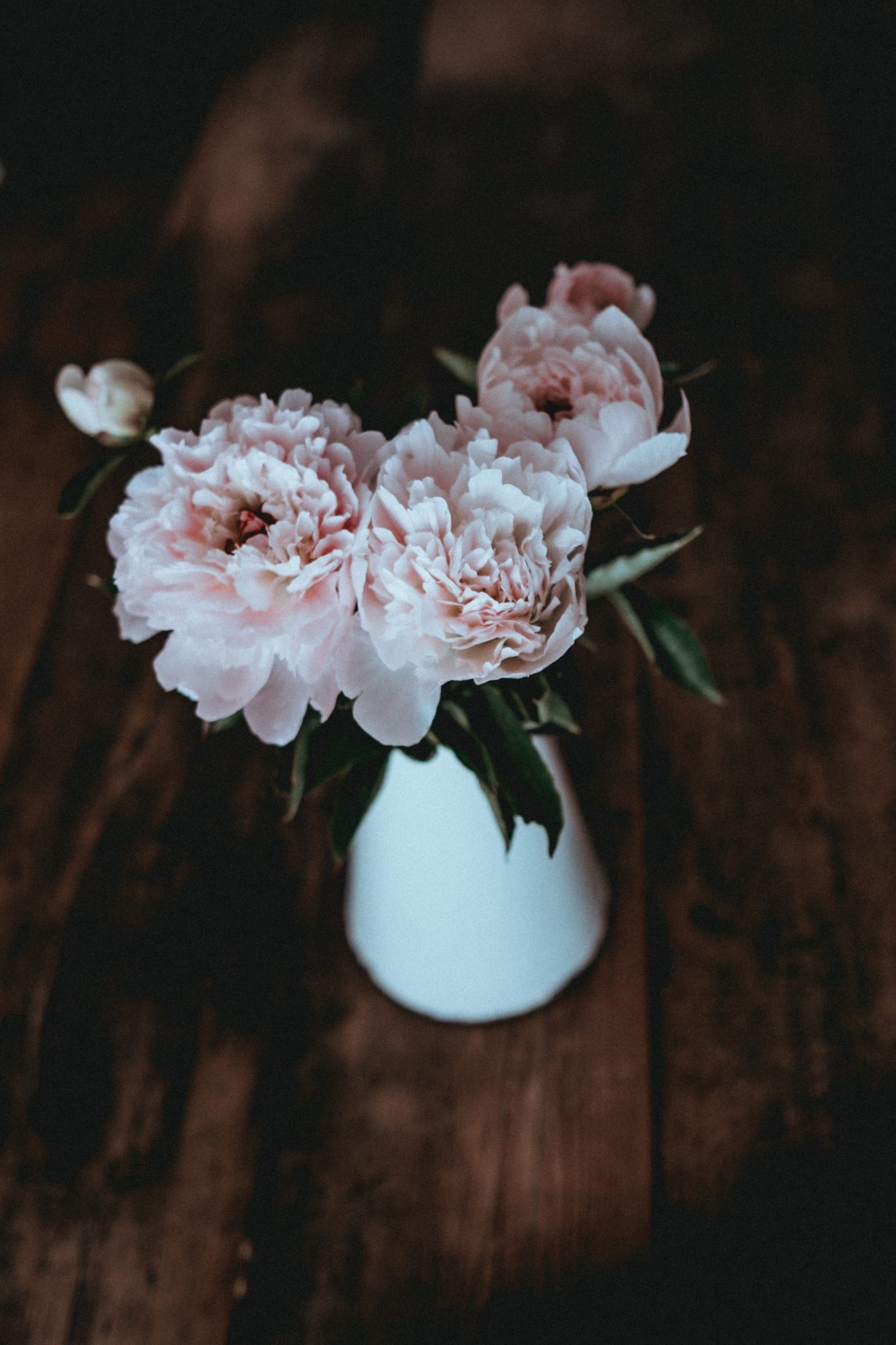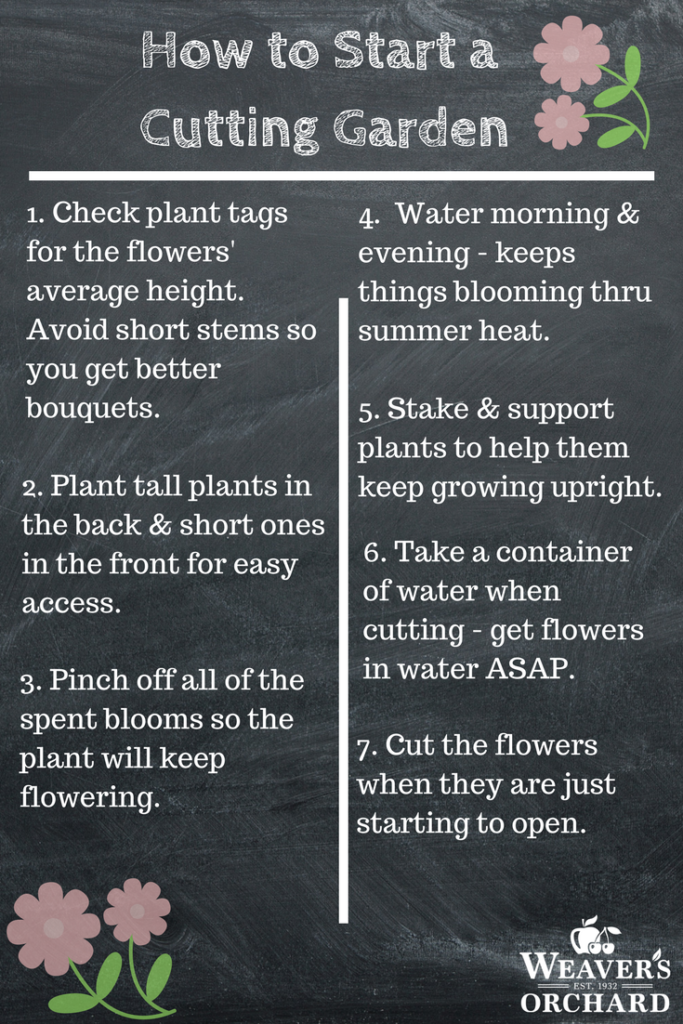Last month, inspired by the fresh flowers arriving in the market, I started chatting about flowers with Vonda Stoltzfus, Weaver’s Orchard’s event coordinator. You can find Vonda’s tips for flower arranging here. For this week’s article, we talked about how to make a cutting garden to supply all your own flowers for bouquets all summer long.
1. First things first, what do you think about when you’re planning your garden’s layout?
There are several things to consider when deciding where and how to plant your flowers. Be sure to plant taller plants in the back and shorter ones in the front. Allow room so you can get to the flowers without needing to walk on others, as these will all be flowers you’re accessing often. Flower tags will tell you how far apart to plant them. If you plant them too far apart, you waste precious garden space. Planting them too close together can cause mildew on plants that are prone to that.
And when planting flowers, it’s always important to check the tags and plant them at a location that gives them the amount of sun and moisture recommended.
I tend to divide my cutting flowers into several areas. Ones that are bushes or perennials will go “here and there” around my house and beds. I do keep a garden area open for “annuals only.” This allows me to till that area of my garden each spring and amend the soil as needed.
2. Is caring for a cutting garden different from caring for other flower gardens?
To encourage flowers to keep blooming you will want to pinch off all of their spent blooms. This is called “deadheading” and causes the plant to keep flowering. Watering a garden in the morning and evening hours helps annuals to keep blooming through the summer heat.
Another lesson I learned the hard way was that plants in a cutting garden need staking and support to help them keep growing upright. There are numerous ways to stake a garden and it’s something that you’ll want to plan for ahead of time. When they are young, I like to let my flowers grow up through a grid held off the ground by stakes.
3. Have you ever found that flowers in a cutting garden are less hardy than their counterparts in a regular flower garden?
While it may seem as though you are being “hard” on your flowers by cutting off their beautiful blooms, cutting off encourages them to bloom more! When I first started gardening I didn’t have the heart to cut off the one beautiful Lisianthus flower on each little plant in my garden. Later I realized that I had robbed myself of many beautiful blooms. Many annuals bloom more profusely if you “pinch them off” in the spring. This encourages the main stem to “fork,” thus creating more stems for them to bloom on. After that, providing adequate moisture will give them what they need to thrive.
4. That’s good to hear! Now that we know the flowers can really flourish, let’s talk about what varieties you like. Which ones are your old standbys?
Picking a favorite flower is nearly impossible for me! But some that almost always find their way into my garden are Peonies, Bells of Ireland and Irises for spring blooms. My favorite summer bloomers include Benary’s Giant Zinnias, Stock, Lisianthus, Snapdragons and Sea Holly. Fall would not be complete without Dahlias and Celosia. Some of my tried-and-true favorite filler greens include Dusty Miller, Purple Basil and Solomon’s Seal.
So many flowers are attached to memories for me. I have a rhubarb plant that not only adds beautiful “texture” to my garden but also reminds me of my Grandma’s house. Together we would cut up the rhubarb and use it to make delicious Strawberry Rhubarb Tapioca similar to this recipe.
I recently planted an heirloom Mock Orange shrub, as my other Grandma would often send home a Mock Orange bouquet with us in the spring that would fill our house with its heady, sweet aroma. (Beware – not all Mock Orange bushes are scented. Shop for them in the spring when they’re blooming – you’ll know if you find a scented one!)
5. And what are some new flowers you’ve tried that you’ve been happy with?
This year I’ve ventured into something new for me and I’m attempting to grow flowers from seed, starting them indoors under a grow light. The Weaver’s Orchard garden center manager, David Howe, has been patiently answering my many questions. There were a few cultivars of flowers that I really wanted to try, but I wasn’t able to find them already started in the greenhouses around here.
6. What do you think about as you’re looking through a seed catalog or browsing a garden center?
Another “rookie mistake” that I made was not checking on plant tags for the flower’s average height. I was so focused on what the actual blooms looked like that I neglected to think about the height that I needed to make a nice arrangement with the flowers. One summer of short flowers in little bud vases taught me that lesson quickly!
7. Do you have any tips about collecting the cut flowers?
My favorite time of day to collect flowers is in the morning, and I always take a vase or bucket of water along with me to the garden. Getting them into water as soon as possible is key.
A sharp knife or scissors works best for cutting them. Be sure to cut a little more stem length than what you think you’ll need so you have room to trim off a bit when you’re doing your actual arranging.
Flowers are best cut when they are just starting to open. Most blooms tend to open up more when you bring them inside, whereas cutting them off when they are fully open shortens their vase life.
8. What do you enjoy about the process of gardening and cutting your own flowers? What was most exciting to you when you first started doing this?
Gardening is very relaxing for me. Don’t plant an extensive flower garden if it all sounds like “work” to you. If it sounds somewhat intriguing, start with just a few plants. A summer or two and you’ll quickly find out if you have “the gardening bug” or if it’s a fleeting idea that turns into a chore.
My mother-in-law is easily the person who has taught me the bulk of my flower knowledge. Her gardens were always pristine and gorgeous, and she truly enjoyed the whole process. When it comes to flower types, her taste and mine are completely different, but I gleaned so much valuable information from spending time around her.
So be curious! Ask questions! Don’t be afraid to try something new. There’s always another spring just a year away!
9. Anything else you’d like to add?
Peonies will always be one of my favorite flowers. They bloom in May and often only last a week or so in the garden before one heavy rain ruins them.
Two years ago, I learned that you can cut them off just before they open. When you see the tight flower buds begin to open and get soft, cut off the heads, wrap the bottom of the stems in a damp but not soggy paper towel and then wrap the flowers in newspaper. (Some refer to the stage as when they feel like “a marshmallow.”)
Put them in the refrigerator until you’re ready for them to bloom. I’ve held mine up to two months this way!
When you’re ready to make a bouquet, get them out of the refrigerator, cut off about an inch of the stem, and put them in warm water. They will start to open and should be fully open within a day. The foliage will often get dry on the stems so I just snip it off and bring in fresh peony leaves from the garden as the leaves stay green all season.

